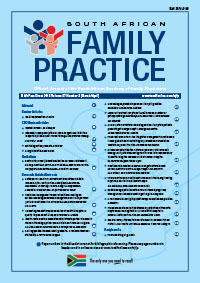A study of hurdles in mass treatment of schistosomiasis in KwaZulu-Natal, South Africa
Keywords:
health education, mass drug administration, mass-treatment, treatment, rural health, Praziquantel, schistosomiasis
Abstract
Background: It has been estimated that 700 million people worldwide and 5.2 million people in South Africa are in need of annual treatment for schistosomiasis. In accordance with the current policy the Department of Health (DoH) in KwaZulu-Natal province, South Africa, aimed to reach 75% treatment coverage in a mass treatment campaign (MTC) of schools in a schistosomiasis-endemic area. Methods: A cross-sectional study was designed to explore the implementation, coverage, challenges and limitations of a DoH MTC in a middle-income country. The study was conducted by exploring nurses’ and research team records, school enrolment lists and parental consent forms. Results: Slightly more than 10 000 learners in 43 primary and high schools were treated, achieving treatment coverage of 44.3%. A median of two schools per day were visited over the course of 39 days. We found that older learners, being male and attending a large school were independent significant predictors for low treatment coverage. Conclusion: Our results indicate a much lower coverage than recommended by the South African National Department of Health and World Health Organization (WHO). Coverage would likely increase through improved consent procedures and repeated schools visits. Further information is needed on how to increase compliance in older teenagers, males and learners in large schools. (Full text available online at www.medpharm.tandfonline.com/ojfp) S Afr Fam Pract 2015; DOI: 10.1080/20786190.2014.978121
Published
2015-05-18
Section
Research Articles
By submitting manuscripts to SAFP, authors of original articles are assigning copyright to the South African Academy of Family Physicians. Copyright of review articles are assigned to the Publisher, Medpharm Publications (Pty) Ltd, unless otherwise specified. Authors may use their own work after publication without written permission, provided they acknowledge the original source. Individuals and academic institutions may freely copy and distribute articles published in SAFP for educational and research purposes without obtaining permission.

